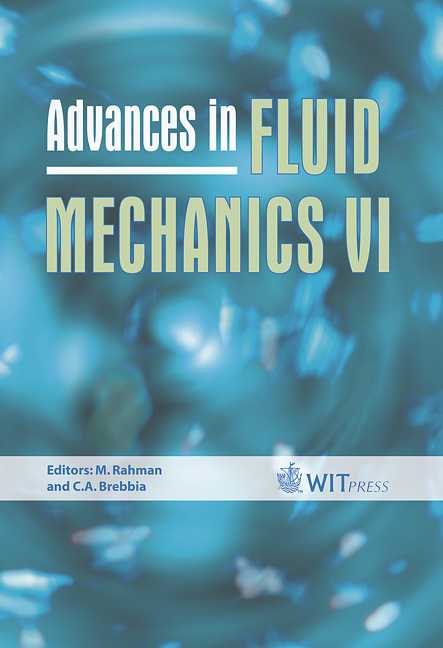Simulation Of Unsteady Muzzle Flow Of A Small-caliber Gun
Price
Free (open access)
Transaction
Volume
52
Pages
7
Published
2006
Size
641 kb
Paper DOI
10.2495/AFM060171
Copyright
WIT Press
Author(s)
Y. Dayan & D. Touati
Abstract
The present paper presents a simulation of a firing process of a 7.62mm bullet and muzzle flow out of a gun barrel. The calculation is made in two stages. First, an internal ballistics (IB) simulation via the IBHVG2 software package, is performed in order to obtain bullet travel dependent breech pressure and temperature. Following this, a simulation of unsteady muzzle flow is made, beginning at the start of bullet motion and ending one meter beyond the muzzle exit point. The second stage calculation is carried out via the CFD-FASTRAN finite volume solver package. The movement of the bullet is simulated by a chimera overset meshing technique. In general, there exists very good agreement between the computed IB and the measured muzzle velocity and pressures, and between the CFD precursors flow field, main propellant flow field calculations and the experimental shadowgraph results. Keywords: blast, CFD-FASTRAN, chimera overset grid, first precursor, second precursor, mach disk, main propellant flow. 1 Introduction Gun muzzle signature, blast and flash phenomena are of practical importance to the gun designer, especially their influence on firing accuracy. Overpressures and intense radiation affect the gun crew and surroundings and can be minimized by muzzle attachments that reduce the momentum of the exit flow [1, 2]. One of the challenges is to simulate the blast process numerically. The simulation results of the precursor flow field and main flow field phenomena help us to better understand the forces and present during these processes (jump phenomena). Another important aspect involves finding the forces acting on the
Keywords
blast, CFD-FASTRAN, chimera overset grid, first precursor, second precursor, mach disk, main propellant flow.





